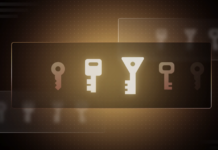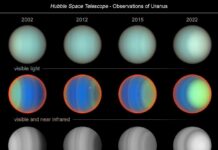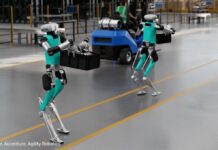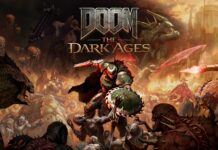Unveiling the Mysteries of Spiral Galaxy NGC 5530
The cosmos never ceases to amaze us with its vast expanse and celestial wonders. One such marvel is the spiral galaxy NGC 5530, which has recently captured the attention of astronomers and space enthusiasts alike, thanks to the NASA/ESA Hubble Space Telescope. Situated approximately 40 million light-years away, this galaxy resides in the constellation Lupus, also known as the Wolf. What makes NGC 5530 particularly intriguing is its classification as a ‘flocculent’ spiral galaxy, a term used to describe spiral galaxies with patchy and indistinct spiral arms rather than well-defined ones.
Understanding the Core of NGC 5530
When observing galaxies, scientists often look for supermassive black holes at their centers, which can be bright due to the high-energy processes occurring around them. However, the bright central source in NGC 5530 is not an active black hole. Instead, it is a star located much closer to us, within our own Milky Way galaxy. This star is only 10,000 light-years from Earth, a mere stone’s throw in cosmic terms, and its alignment with NGC 5530 creates an optical illusion, making it appear as though it is part of the galaxy’s dense core.
A Chance Discovery: Supernova SN 2007IT
Astronomical discoveries are often the result of meticulous observation and sometimes sheer luck. On the night of September 13, 2007, Australian amateur astronomer Robert Evans pointed his backyard telescope at NGC 5530 and made a remarkable discovery. He observed a bright point of light that was not present in reference images of the galaxy. This was the supernova SN 2007IT, a stellar explosion that had completed its 40-million-year journey to Earth just days before Evans spotted it.
Evans has made a name for himself in the astronomical community by discovering over 40 supernovae using this painstaking method of comparing current observations with archived photos. His discovery of SN 2007IT is a testament to the value of amateur astronomy and the significant contributions these enthusiasts can make to our understanding of the universe.
The Nature of Flocculent Spiral Galaxies
Flocculent spiral galaxies like NGC 5530 are fascinating subjects of study due to their unique structure. Unlike grand-design spirals, which have prominent, well-defined arms, flocculent spirals possess a more chaotic and patchy appearance. This structural difference is believed to result from variations in star formation processes and the gravitational interactions within the galaxy. By studying galaxies like NGC 5530, astronomers can gain insights into the diverse mechanisms that shape galaxies and influence their evolution over billions of years.
Implications and Future Observations
The observation of NGC 5530 and the discovery of SN 2007IT provide valuable data for astronomers seeking to understand the life cycles of stars and the dynamics of galaxy formation. Supernovae, in particular, play a crucial role in enriching the interstellar medium with heavy elements, which are essential for forming new stars and planets. By studying these cosmic events, scientists can learn more about the processes that govern the evolution of galaxies and the universe as a whole.
Moreover, the involvement of amateur astronomers like Robert Evans highlights the importance of public engagement in science. With advancements in technology and access to high-quality telescopes, amateur astronomers can continue to contribute to important discoveries, expanding our knowledge of the cosmos.
Conclusion
The spiral galaxy NGC 5530 serves as yet another reminder of the beauty and complexity of our universe. Through the combined efforts of professional and amateur astronomers, we can continue to unravel the mysteries of distant galaxies and the cosmic phenomena that shape them. As we gaze up at the night sky, we are reminded of the unending wonders that await discovery, inspiring future generations to explore the cosmos and expand the horizons of human knowledge.
For more information on the Hubble Space Telescope and its ongoing mission to explore the universe, you can visit [NASA’s official Hubble website](https://science.nasa.gov/mission/hubble/).
For more Information, Refer to this article.


































